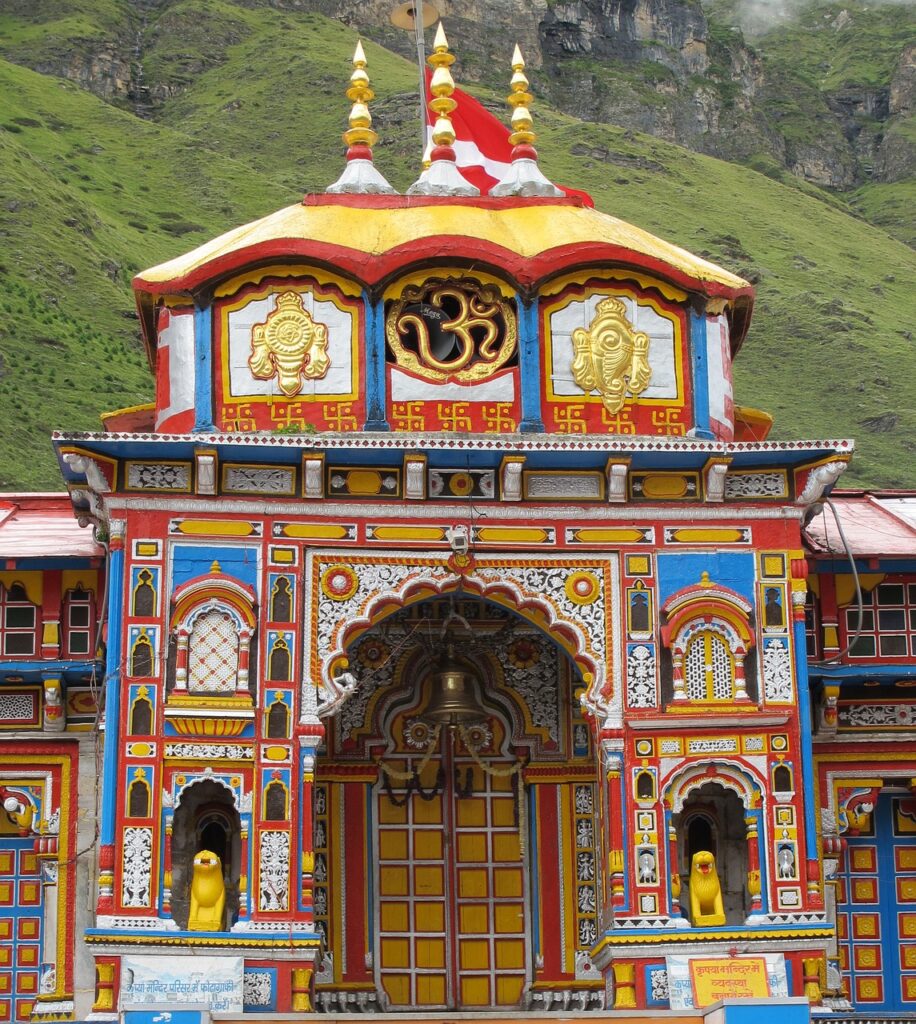Badrinath: A Sacred Destination in Uttarakhand
Badrinath, nestled in the Garhwal Himalayas of Uttarakhand, is one of the most important pilgrimage sites in India. It is a part of the Char Dham Yatra, a significant spiritual journey for Hindus. With its stunning snow-clad mountains, the sacred Alaknanda River, and deep mythological connections, Badrinath offers not just a religious experience but also breathtaking natural beauty, making it a top destination for spiritual seekers and nature lovers alike.
If you are planning to Explore Uttarakhand, Badrinath is a must-visit. Whether you are a pilgrim looking for divine blessings or a traveler seeking tranquility in the Himalayas, Badrinath offers the best travel experience.
Location of Badrinath
Badrinath is located in the Chamoli district of Uttarakhand, at an altitude of 3,300 meters (10,826 feet) above sea level. It is surrounded by the Nar-Narayan mountain range, with the majestic Neelkanth Peak forming a breathtaking backdrop. The sacred Alaknanda River, one of the tributaries of the Ganges, flows through this region, enhancing its spiritual significance.
- State: Uttarakhand
- District: Chamoli
- Altitude: 3,300 meters (10,826 feet)
- Nearest Town: Joshimath (45 km away)
- Nearest Airport: Jolly Grant Airport, Dehradun (310 km away)
- Nearest Railway Station: Rishikesh (295 km away)
How to Reach Badrinath?
By Air
The nearest airport is Jolly Grant Airport in Dehradun, approximately 310 km from Badrinath. From there, you can hire a taxi or take a bus to reach Badrinath.
By Train
The nearest railway station is Rishikesh, around 295 km away. From Rishikesh, you can take buses or hire taxis to reach Badrinath.
By Road
Badrinath is well-connected by road with major cities in Uttarakhand. You can drive from:
- Rishikesh (295 km)
- Haridwar (320 km)
- Dehradun (340 km)
- Delhi (525 km)
Government and private buses, as well as shared taxis, operate regularly from Rishikesh, Haridwar, and Dehradun to Badrinath.
Best Time to Visit Badrinath
Badrinath remains closed for six months every year due to heavy snowfall. The best time to visit Badrinath is from May to October, when the temple is open for devotees.
Season-wise Travel Guide
- Summer (May – June): Ideal for pilgrimage and sightseeing with pleasant weather.
- Monsoon (July – September): Risky due to landslides, but the lush green surroundings make it scenic.
- Autumn (October – November): Best time for those who want to avoid the rush.
- Winter (November – April): Temple remains closed due to extreme cold and heavy snowfall.
The temple opens every year in April or May (Akshaya Tritiya) and closes in October or November (on Vijayadashami).
Why is Badrinath Important to Visit?
Badrinath is one of the holiest destinations in India and holds immense spiritual, historical, and natural significance.
1. Religious Significance
- It is part of the Char Dham Yatra (Badrinath, Dwarka, Puri, Rameswaram), one of the most sacred pilgrimages for Hindus.
- It is also included in the Chhota Char Dham Yatra of Uttarakhand (Badrinath, Kedarnath, Gangotri, Yamunotri).
- The temple is dedicated to Lord Vishnu and is one of the 108 Divya Desams, making it highly significant for Vaishnavites.
2. Mythological Importance
- According to Hindu mythology, Lord Vishnu meditated here while Goddess Lakshmi took the form of a Badri tree to provide him shade.
- It is believed that Adi Shankaracharya, the great Hindu saint, re-established the temple in the 8th century.
3. Natural Beauty
- The Neelkanth Peak provides a stunning backdrop to the temple.
- The Alaknanda River enhances the peaceful and spiritual atmosphere.
Badrinath is not just a religious site but also one of the best places to visit in Uttarakhand for its breathtaking landscapes and serene environment.
History and the Story of Badrinath
The Legend of Badrinath
According to Hindu mythology, Lord Vishnu chose Badrinath as his meditation spot. To protect him from harsh weather, Goddess Lakshmi turned into a Badri tree, covering him from snow and cold winds. Pleased with her devotion, Vishnu named the place Badrikashram.
Another legend states that Nar and Narayan, twin forms of Lord Vishnu, meditated here, and thus the region became sacred.
Historical Significance
The temple is believed to have been built in the 8th century by Adi Shankaracharya, who revived Hinduism and re-established important temples across India. The temple’s structure has undergone renovations due to natural calamities over centuries.
Things to Do in Badrinath
- Visit Badrinath Temple: The main attraction, dedicated to Lord Vishnu.
- Tapt Kund: A natural hot water spring believed to have healing properties.
- Mana Village: The last village on the Indo-Tibetan border, known for its unique culture.
- Charan Paduka: A rock with Lord Vishnu’s footprints, a revered site for pilgrims.
- Vasudhara Falls: A stunning 400-ft waterfall located near Mana Village.
- Bheem Pul: A legendary stone bridge built by Bheema from the Mahabharata.
Conclusion: Why You Must Visit Badrinath
Badrinath is more than just a temple; it is a place where spirituality, mythology, and nature come together. Whether you are a devotee seeking blessings or a traveler exploring Uttarakhand, this destination promises an unforgettable experience.
With its rich history, religious significance, and mesmerizing landscapes, Badrinath is undoubtedly one of the best places to visit in Uttarakhand. So, plan your trip today with the best travel guide and embark on a journey of peace and devotion.
Are you ready to explore the spiritual charm of Badrinath? Start planning your trip today! 😊

